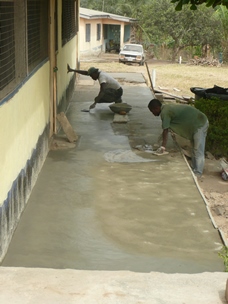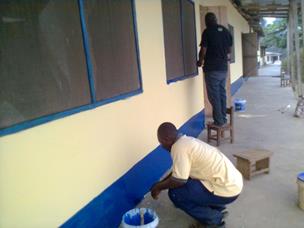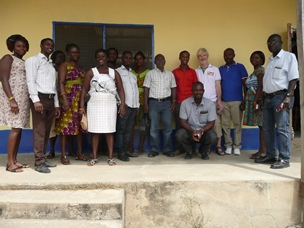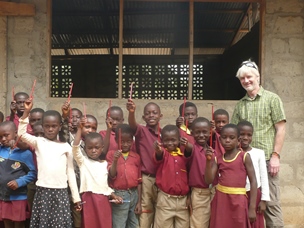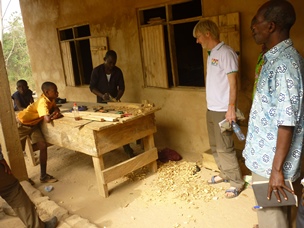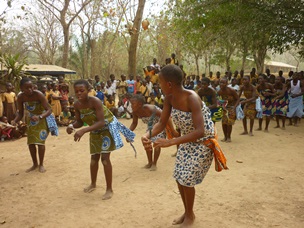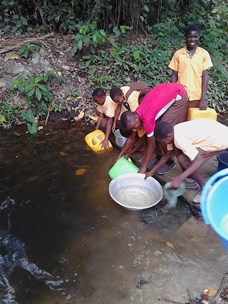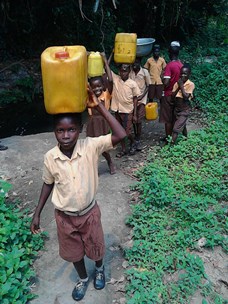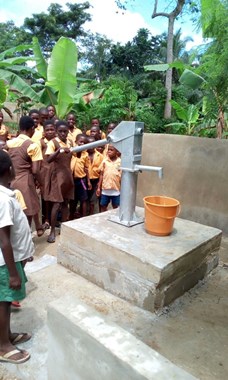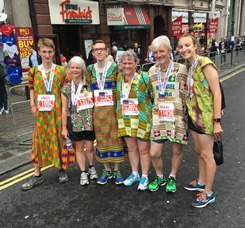Annual Newsletter: Issue 9 |
||
Last Updated: December 2016 |
Select Newsletter Edition |
|
Looking back over the past 12 months I would have to say that I think 2016 has been our most successful year to date; which is rather odd when the accounts tell me that we received less money than in 2015! So what did we do and how did we do it you ask; well sit back with a nice drink and let me tell you. Firstly, let us look at what we achieved. For some time now we have worked with four schools in Ghana, three of these (New Tafo, Asafo & Kute Buem) comprise of both a Primary and a Junior High and one (Bomponso) has just a Primary. There is always a list of jobs to do in each school and so we are frequently consulting with the head teachers and staff to decide which projects are the current priorities based, obviously, on their needs but also on our ability to fundraise. At the beginning of this year we were in the fortunate position to offer each school a budget of £500 for a small project. This was partially because we had received a couple of unexpected donations late in 2015 from Ropley School and the Archery Club at Chester University plus an overdue gift aid payment from HMRC. We decided to organise the projects to coincide with my visit in February so I could be there to see the work in action and help out where possible. At New Tafo the project was to concrete the walkway in front of the primary classrooms because it had become pitted and dangerous and then paint the whole primary school. Last year we had been able to finish building the new classrooms so although it could be argued that painting was not an educational priority it did make the school look finished and the children were really pleased and proud of their ‘new’ rooms. So on this occasion we made the decision that by creating a nicer environment we were also improving the children’s educational experience. This can also be said for the teachers, many of whom came in during their weekend to help with the painting (See pictures 1 - 3). At Kute Buem we are still working to complete the refurbishment of the Junior High. Having repaired the structure in 2015 we were able to plaster the classrooms both inside and out and add the window shutters and doors. It is always an adventure to visit Kute because of its remote location and this time was no exception. We travelled in a teacher’s car and I’m sure if ‘Sat Nav’ existed in this part of Ghana it would say the journey should take about 5 hours. However, that would be ignoring the state of the roads and, largely due to the roads, the poor condition of the car! When you break down, and from my experience it is when rather than if, you really hope the driver can fix the problem because if not you have to walk to the nearest settlement or, if that’s too far, you hope for a passing mechanic! On this trip the driver managed to fix the puncture but we had to flag down a car for the mechanical problem. They then drove to the nearest town and gave a message to the local mechanic who arrived a couple of hours later on his motorbike. So, not too different to us calling the AA really! Anyway the journey took about 11 hours to get there and 10 to get back but the time in between was worth it. On arrival we met with the local chief and his elders and then the school children performed some traditional dancing (see pictures 5 & 6) Our link with Bomponso is relatively new, since 2014. A primary school had been built in the community in the 1950’s but it was poorly constructed and in 2004 the government decided to knock it down and rebuild a safer one. However, they only had enough money to rebuild half of the rooms and so classes were forced to share. It continued like this for the next decade and as a result the school roll decreased as parents, unhappy with the conditions, kept their children at home. These children would then help out on the family farm or go to the market to sell goods instead of receiving an education. It was at this point that SEPIA was invited to visit and as a result we started our project to build a new three classroom block. This was completed in 2015 and so their 2016 bursary was used to provide desks and equipment for the teachers. During my visit to Bomponso I became aware that every morning the children would spend the first hour or more collecting water from a nearby river. Whilst that itself was not so unusual I had noticed that there was a well on the outskirts of the school. It turned out that the well had partially collapsed and so could not be used and the community was unable to raise the funds to repair it. So, a new project was born and by November of this year the well was back in working order with the addition of a hand pump which not only made gaining water easier but also meant that it was sealed and so will remain free of debris and hence will be a cleaner, safer source. This water pump not only serves the school but also the whole community of about 500 people. It also means that the children no longer use time going to the river and instead spend it in lessons gaining their valuable education. Funding this, which cost nearly £2,500, kept us busy during the summer and became our main project this year (see pictures (7, 8 & 9) So that is what we did but where did the money come from? Michael |
||
Photo 1 & 2 - New Tafo Primary repairs |
||
|
||
Photo 3 -New Tafo Primary Staff |
||
|
||
Photo 4 - Asafo Primary |
||
|
||
Photo 5 Kute Buem JHS |
||
|
||
Photo 6 - Welcome dance at Kute Buem |
||
Photo 7 & 8 - Bomponso Primary original water source |
||
|
||
- |
||
Photo 9 - Bomponso new water pump |
||
|
||
|
||
Photo 10 - Team SEPIA 2016
|
||







